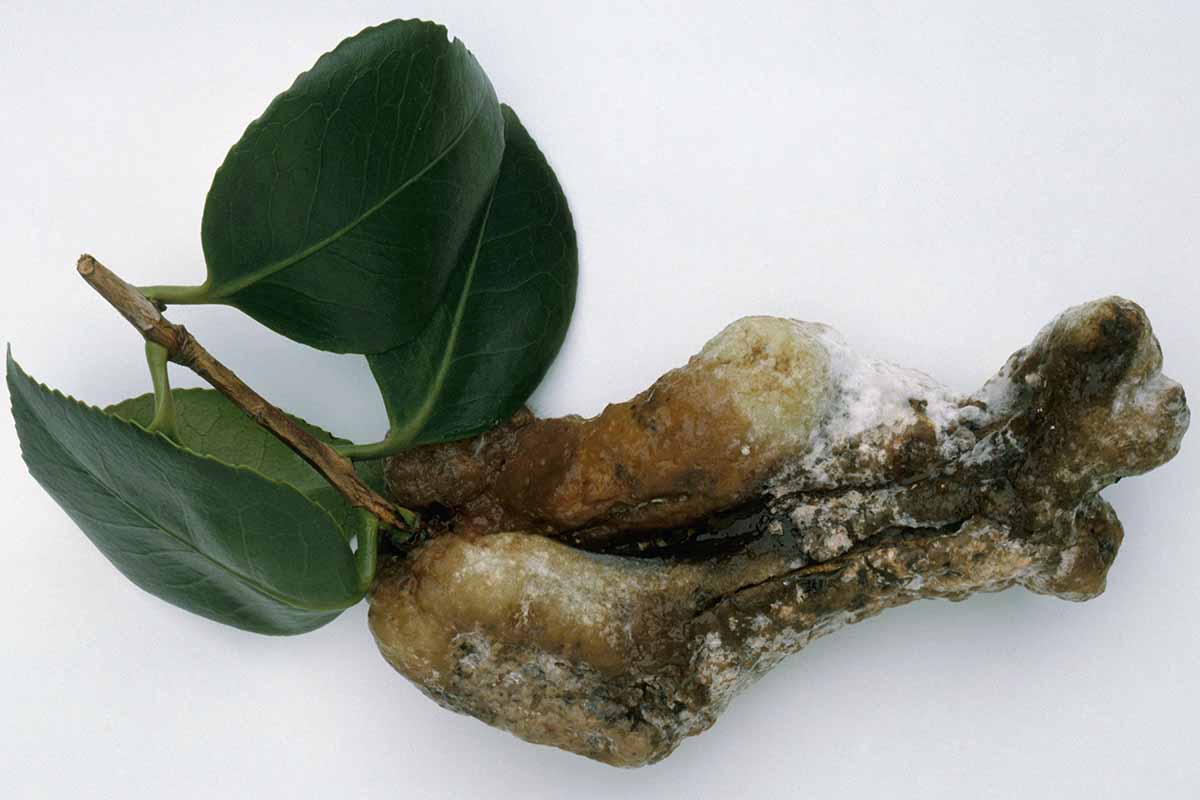[ad_1]
Plants are weird and wonderful. Some days they look picture perfect and other times they look decidedly… wrong.
Sometimes the problem is a branch that is growing oddly crooked, or maybe the sun scorched the leaves of a shade-loving species.
And then there are those times when disease strikes and causes your plant to do some strange stuff.

We link to vendors to help you find relevant products. If you buy from one of our links, we may earn a commission.
Leaf gall is one of those diseases that can turn a stunningly beautiful camellia into a display that makes you scratch your head.
It causes funky-looking growths that make the leaves turn into something that looks more suited to a succulent garden.
If you’ve noticed something strange happening with the foliage on your camellia plants, it could be leaf gall.
In this guide, we’ll talk about what causes this problem, what it looks like, and what you can do about it.
Here’s everything we’ll go over:
This fungal issue is far from the worst disease a camellia plant can contract, but that doesn’t mean it’s something you want to ignore or encourage to stick around.
And by the way, if you need a refresher on how to grow camellias, check out our guide.
Let’s show this disease the door!
What Causes Leaf Gall?
Camellia leaf gall is a disease caused by the fungus Exobasidium camelliae. This fungus may attack all plants in the Camellia genus, but it mostly affects C. sasanqua.
The “roots” of the fungus, technically called haustoria, suck up nutrients from the host plant and cause some unusual symptoms.

These fungi can travel in wind and water, and can lay dormant on plant material all winter long, just waiting to burst forth and wreak havoc in the spring.
You’ll start to see symptoms in mid-spring as the pathogens start reproducing, maturing, and spreading.
This fungus is host-specific, which means you don’t need to worry about it attacking your roses or rhododendrons. It can only live on camellias.
Of course, other plants can contract similar looking diseases, but they’re caused by a different type of fungus.
Symptoms to Look For
Unsurprisingly, the most obvious symptom of this disease is galls on the leaves of the plant. These galls can also form on young shoots.

The galls are yellow, light green, cream, pink, or red. As they mature, the layers on the back of the leaf start to flake away, revealing a white layer underneath. This white layer is the fungus.
The leaves of affected plants become extremely thick, up to five times as thick as they normally would be. In fact, they sort of start to look like succulent leaves. Shoots will look larger than normal and fleshy, as well.

The foliage turns lighter green on infected leaves, which is often the first symptom that gardeners notice.
As the season progresses, the galls turn brown and fall off the foliage and onto the ground, where the fungi can hang out until the next year to infect again.
How to Treat This Disease
You’ve heard the bad news, now for the good news! Leaf gall isn’t really a big deal. It’s kind of weird-looking, but it doesn’t hurt the plant in the long term. Just peel the galls off, seal them up in a bag, and toss them in the trash.
The trick is to take the galls off before the leaf layers start peeling off, revealing the white fungus underneath.
Once that happens, the fungal spores are being released into the world and will find another host to hang out on, and you’ll have to complete the process of removal all over again next year if your plants are reinfected.

If your camellia has a heavily infected branch with more than half of the leaves showing symptoms, just trim off the entire branch and dispose of it.
Then, clean up the ground well just in case any galls that have fallen are trying to sneak by. If you remove any fallen foliage as well as the galls, you deny the fungi a place to overwinter.
Remember never to place infected plant material on your compost pile, as this can encourage further spread.
Put an End to This Galling Disease
Leaf gall isn’t a death sentence for your camellias. With a little extra work on your part, you can get this disease under control and return your plants to their beautiful selves.

What kind of camellias are you growing? Do you have more than one type in your garden, and if so, are all of them experiencing galls? Or just some species? Let us know in the comments!
I hope this guide helped you on your camellia-growing journey. If it did, you might want to check out a few of our other guides to these wonderful flowers. Here are a few that you might find interesting to add to your reading list:
[ad_2]
Source link








 + Planting String of Watermelon Succulents
+ Planting String of Watermelon Succulents  with Garden Answer
with Garden Answer


